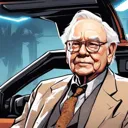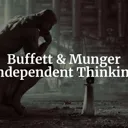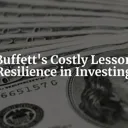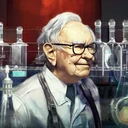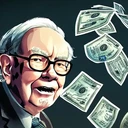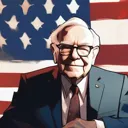Tags: History / National Indemnity / Warren Buffett
This fanpage is not officially affiliated with Berkshire Hathaway: Disclaimer
Embark on a captivating journey through the unexpected twists and turns that led to Warren Buffett's legendary success with Berkshire Hathaway. From a pivotal encounter with Seabury Stanton to the evolution of investment philosophy, this article offers a fascinating exploration of adaptability, integrity, and long-term vision. Don't miss out on uncovering the secrets behind Berkshire Hathaway's enduring influence and the lessons it holds for future success.
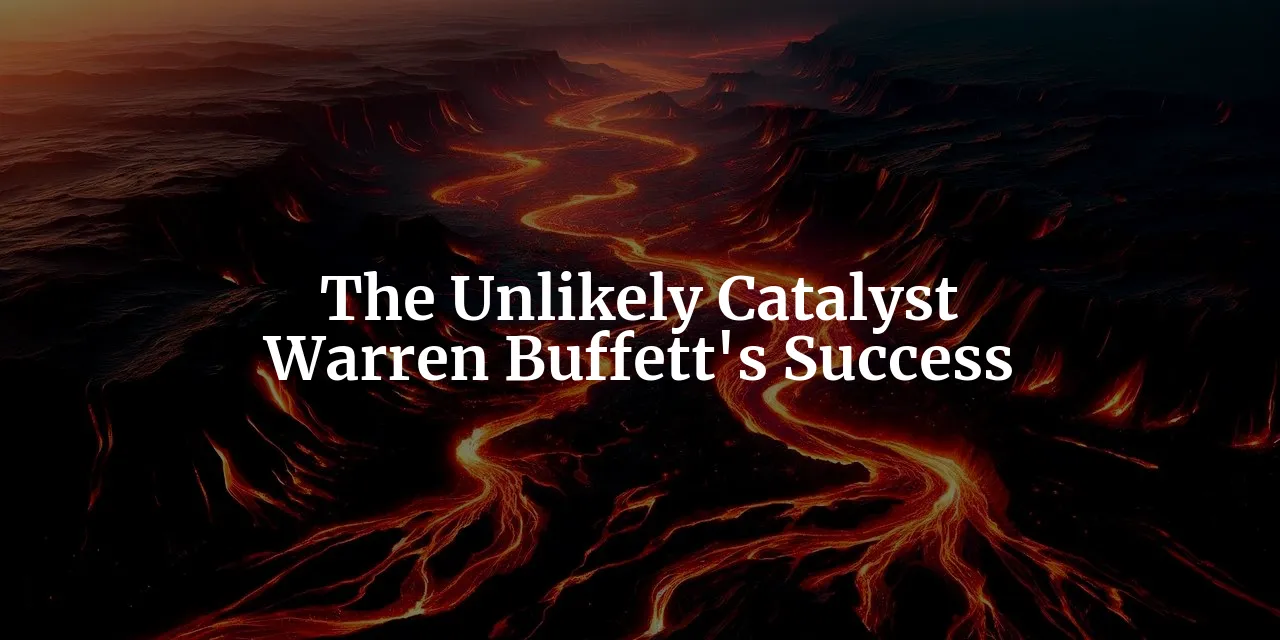
Introduction
Warren Buffett, often hailed as the Oracle of Omaha, is not just a legendary investor known for his astute long-term investment strategy; he is also the architect behind the monumental success of Berkshire Hathaway. Initially, Berkshire Hathaway was a struggling textile company, far from the global conglomerate it is today. A pivotal moment in the company's history, and indeed in Buffett's investment career, was sparked by an unlikely catalyst: Seabury Stanton's offer to buy Buffett's shares at a lower price than previously agreed. This offer, and Buffett's subsequent decision not to sell, marked the beginning of a transformation that would lead to one of the most successful investment stories of the 20th and 21st centuries.
This article promises to take you through a deep dive into the historical, political, and economic context surrounding this pivotal moment. It will also provide insights into Buffett's investment philosophy shifts over the years, moving from "cigar butt" investing towards acquiring "wonderful businesses" at a fair price. This journey from a seemingly negative interaction to a landmark victory in investment history showcases the unpredictable nature of business and the power of strategic decision-making ↗↗.
The Early Years of Warren Buffett
In 1956, with $105,100 and seven limited partners, Warren Buffett laid the foundation of what would become a legendary investment career by forming Buffett Partnership, Ltd. 2. His initial investment strategy, heavily influenced by his mentor Benjamin Graham, focused on undervalued stocks or "cigar butts," a term that denotes picking up companies trading at a significant discount to their liquidation value, hoping for one last "puff" of profit 6.
Buffett's knack for investment was evident early on as he became a millionaire by 1962, a mere six years after starting his partnership 2. Over the 12 years he ran the fund, Buffett returned an average of 31% per year, showcasing his unparalleled success with the "cigar butt" strategy 6. His background working at Benjamin Graham's investment firm, Graham-Newman Corp., was instrumental in shaping this investment approach 8.
The shift in Buffett's thinking began to manifest when he started purchasing shares in Berkshire Hathaway. Initially seen as another "cigar butt" investment, Buffett's rationale behind buying Berkshire shares was based on the expectation of more plant closures and share repurchases, which he believed would lead to short-term gains 1.
Seabury Stanton's Offer
Seabury Stanton, the then-leader of Berkshire Hathaway, played a crucial role in the company's history and, unbeknownst to him at the time, in Warren Buffett's investment career 3. In 1964, Stanton made an offer to buy Buffett's Berkshire shares at $11.375 per share, a figure lower than the previously agreed $11.50 1.
But: $11.375 is not $11.50!

This reduced offer, perceived by Buffett as a personal slight or challenge, led to his decision not to sell his shares. It was a moment of personal conflict that inadvertently influenced Buffett's decision-making process, pushing him towards eventually taking control of Berkshire.
Reflecting on this decision, Buffett later described it as "monumentally stupid" yet undeniably pivotal 1. At the time, Berkshire Hathaway was a struggling textile manufacturer, experiencing operating losses and a significant decrease in net worth 1. The broader economic and industry context of the 1960s made the textile industry a particularly challenging sector, yet it was within this struggling industry that Buffett found an unlikely opportunity to pivot towards unprecedented success.
This series of events underscores the importance of strategic decision-making and the unpredictable nature of investment opportunities. Seabury Stanton's offer, though seemingly inconsequential at the time, acted as a catalyst for one of the most remarkable transformations in business history, illustrating how moments of personal challenge can lead to groundbreaking strategic shifts.
Taking Control of Berkshire
In the early 1960s, Warren Buffett, through his investment entity Buffett Partnership Ltd. (BPL), began acquiring shares of Berkshire Hathaway, a struggling northern textile manufacturer that was then led by Seabury Stanton. By April 1965, BPL owned 392,633 shares, effectively taking control of Berkshire Hathaway 1. This move was not just a simple acquisition; it was the beginning of a transformation that would eventually turn Berkshire Hathaway into one of the most successful conglomerates in the world.
Initially, Buffett maintained Berkshire's core textile business, despite its dwindling fortunes. However, his strategic vision soon led him beyond textiles, seeking more lucrative investment opportunities. In 1967, a pivotal decision was made when Berkshire acquired National Indemnity Company for $8.6 million 1 ↗. This acquisition marked a significant shift in Berkshire's business model towards insurance, laying the groundwork for future growth in this sector.
Buffett's decision to merge the operations of a "terrible business" with an "excellent business" was initially seen as controversial. Yet, this bold move would shape Berkshire's future, steering it away from the dying textile industry. The closure of the textile operations in 1985 marked the end of Berkshire's original business line, but by then, the conglomerate had already embarked on a path of diversified investment that would lead to unprecedented success 1.
Reflecting on this period, Buffett acknowledged purchasing Berkshire as his biggest investment mistake, given the opportunity cost of not investing the funds elsewhere. Despite this, the eventual success of Berkshire Hathaway stands as a testament to Buffett's strategic acumen and his ability to transform a struggling business into a global powerhouse 3.
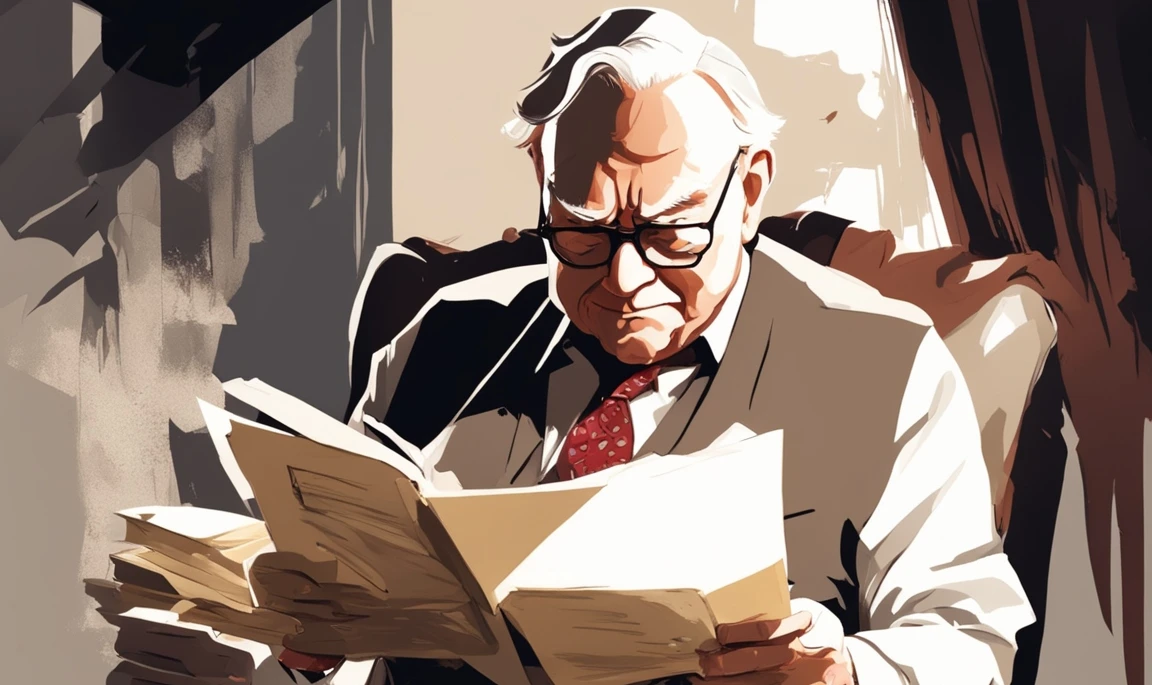
Buffett's Investment Philosophy Evolution
Warren Buffett's investment philosophy underwent a significant evolution from his early days of "cigar butt" investing, a strategy focused on buying undervalued companies regardless of their long-term prospects, to focusing on acquiring "wonderful businesses" at a fair price ↗. This shift was largely influenced by Charlie Munger, Buffett's longtime partner and vice chair of Berkshire Hathaway 67 ↗.
Munger encouraged Buffett to diversify his investment strategy and focus on the quality of the businesses he was investing in, rather than just their price ↗. This led to significant investments in companies like American Express and See's Candies ↗, which have become cornerstones of Berkshire's investment portfolio 7. Munger's influence on Buffett's thinking was profound, steering Berkshire towards investing in companies with strong management teams, long-term growth potential, and integrity.
The closure of the Buffett Partnership in 1969 marked a turning point. Buffett recommended his partners invest in tax-free municipal bonds or with his Columbia classmate, Bill Ruane, signaling a move away from the aggressive investment strategies of the past. This period also saw technological advancements and changes in the nature of assets, making the "cigar butt" strategy less effective over time 26.
Buffett's willingness to learn and adapt has been crucial to his and Berkshire's sustained success. This evolution in investment philosophy has not only led to significant financial returns but has also shaped the investment landscape, influencing countless investors worldwide 8.
The Legacy of Berkshire Hathaway
The legacy of Berkshire Hathaway under Warren Buffett's leadership is nothing short of extraordinary. From 1965 to 2022, Berkshire Hathaway's stock value soared by 3,787,464%, turning a $10,000 investment in 1965 into $378 million by the end of 2022 8.
We may also put this phenomenal growth into slightly different numbers: Berkshire Hathaway's Stockholder's Equity was about $22M in 1964 5. Buffett started buying Berkshire shares in 1962 for $7.50 each, which would correspond to a market capitalization of about $8,5M for approximately 1.1M shares outstanding in 1964 5. Buffett's offer to sell the shares at $11.50 each would value Berkshire Hathaway at around $13M at that time. Fast forward to January 2024, Berkshire's market capitalization has reached over $837B 4 ↗. Again, that increase corresponds to an annual rate of return of approximately 20% - over the last 60 years! This remarkable growth reflects not just the financial acumen of Buffett and his team but also a commitment to a set of principles that have guided Berkshire's investment strategy over the decades.
Buffett's philanthropic pledge to give away his entire fortune, estimated at $120 billion, underscores his commitment to social responsibility and the broader impact of his investment success 8. The annual shareholder meetings, known as "Woodstock for Capitalists," have become cultural phenomena, drawing thousands from around the globe to glean insights from Buffett and Munger.
The story of Berkshire Hathaway illustrates the potential for transformation and growth, even from questionable beginnings. It serves as a powerful lesson in adaptability, integrity, and the importance of a long-term perspective in investment success. As Buffett once remarked, "It's far better to buy a wonderful company at a fair price than a fair company at a wonderful price."
Reflecting on Buffett's legacy and the future of Berkshire Hathaway in the post-Buffett era, it is clear that the principles and strategies that have driven the conglomerate's success will continue to influence investors and companies worldwide ↗. Berkshire Hathaway's journey from a struggling textile manufacturer to a global conglomerate is a testament to the vision, strategy, and leadership of Warren Buffett and his team, setting a benchmark for investment success that will be studied and admired for generations to come.
Conclusion
In this exploration of Warren Buffett's acquisition of Berkshire Hathaway, we have traversed from the initial, seemingly inconsequential meeting with Seabury Stanton, through the pivotal moments that shaped one of the most extraordinary tales in the annals of American business. The unlikely catalyst of Seabury Stanton's offer, which at first appeared as a mere footnote in the vast ledger of financial transactions, proved to be the turning point in Warren Buffett's illustrious career. This moment of opportunistic brilliance not only led to Buffett's control over Berkshire Hathaway but also marked the beginning of its transformation from a struggling textile manufacturer into a global conglomerate powerhouse.
Reflecting on this journey, it becomes evident that the metamorphosis of Berkshire Hathaway under Buffett's leadership is a testament to the power of adaptation, strategic foresight, and an unwavering commitment to a set of core investment principles. Buffett's evolution in investment philosophy, from focusing on undervalued assets to acquiring businesses with strong fundamentals and excellent management teams, has been instrumental in guiding Berkshire Hathaway's unparalleled success. This evolution underscores the importance of being flexible yet principled in investment decisions, a lesson that remains relevant for investors and business leaders alike.
The broader implications of Buffett's story extend beyond the realms of finance and investment. They encapsulate the essence of adaptability, integrity, and long-term thinking in achieving sustained success. Buffett's journey encourages us to look beyond the immediate and apparent, to seek value where others may not, and to remain steadfast in our principles even as we adapt to the ever-changing business landscape.
As we look to the future, Berkshire Hathaway's enduring influence in the investment world is indisputable. Its continued evolution in the post-Buffett era remains a subject of keen interest and speculation. This legacy, built on a foundation of shrewd investment decisions and ethical leadership, offers a beacon of inspiration for current and future generations of investors and business leaders. It serves as a compelling reminder of the profound impact that visionary leadership and a commitment to core values can have on shaping the destiny of a company.
In closing, let us draw inspiration from Warren Buffett's remarkable journey with Berkshire Hathaway. May we strive to incorporate the lessons of adaptability, integrity, and long-term vision into our own investment strategies and business decisions. I encourage readers to engage further with the history and lessons of Berkshire Hathaway, exploring how its storied past can inform our paths to future success.
Let this narrative not only serve as a testament to what has been achieved but also as a call to action—to pursue excellence, to think deeply, and to act with purpose. The story of Berkshire Hathaway, underpinned by the unlikely catalyst of Seabury Stanton's offer, continues to inspire and guide us in the quest for enduring success in the complex world of investment and beyond.
References
-
2014 Annual Report - Chairman's Letter (Warren Buffett) - www.berkshirehathaway.com ↩↩↩↩↩↩↩
-
Why Warren Buffett Decided to Close His Investment Partnership in 1969 - finmasters.com ↩↩↩
-
Berkshire Hathaway: History - Wikipedia - en.wikipedia.org ↩↩
-
Berkshire Hathaway Inc. (BRK-B) Stock Price, News, Quote & History - Yahoo Finance - finance.yahoo.com ↩
-
2014 Annual Report, Annex: Berkshire Hathaway Annual Report 1964 from Seabury Stanton - www.berkshirehathaway.com ↩↩
-
Cigar Butt Investing: Buffett’s Strategy Until Munger Came Along - www.theinvestorspodcast.com ↩↩↩↩
-
How Charlie Munger built the blueprint for Berkshire's $785 billion empire and steered Warren Buffett away from ‘cigar-butt’ investing - fortune.com ↩↩
-
Warren Buffett just turned 93. From ‘cigar butt’ investing to buying ‘wonderful businesses,’ here’s how he led a 3,787,464% return at Berkshire Hathaway - fortune.com ↩↩↩↩

